Service technicians have no problem recognising breakdowns and carrying out machine diagnostics, John Deere Engine Fault Codes, plus they are familiar with equipment from a variety of manufacturers.
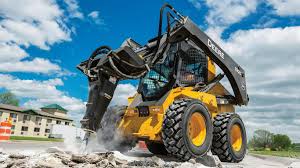 The John Deere fault codes list can come in handy in solving a bunch of failures that you might be facing right now. And so, welcome to one of the most well-sorted guides with all the necessary codes including the explanation on matters that are related. We know how hard it can get when finding yourself constantly going back and forth due to a sudden problem that seems almost unsolvable at one point. And to make the misery a little less time-consuming, we thought a fault code list can really help. Almost all find it boring to read the John Deere fault codes pdf from first to last pages. Due to this, we’ll focus on presenting trouble codes based on different units. Let’s get into the lists.
The John Deere fault codes list can come in handy in solving a bunch of failures that you might be facing right now. And so, welcome to one of the most well-sorted guides with all the necessary codes including the explanation on matters that are related. We know how hard it can get when finding yourself constantly going back and forth due to a sudden problem that seems almost unsolvable at one point. And to make the misery a little less time-consuming, we thought a fault code list can really help. Almost all find it boring to read the John Deere fault codes pdf from first to last pages. Due to this, we’ll focus on presenting trouble codes based on different units. Let’s get into the lists.
John Deere Engine Codes (ECU) List
The ECU (Engine Control Unit) is a sensor that shows the fault codes of 1 or more electrical systems of the vehicle. Look at a few trouble codes below.
ECU 000097.03 – It indicates water in the fuel.
ECU 000097.04 – The engine water trap is full and needs to take out the water from it.
ECU 000100.01 – The oil pressure is pretty low and indicates checking the level of engine oil.
ECU 000100.03 – Engine pressure input and high voltage.
ECU 000100.04 – Issue of the voltage signal in the oil pressure.
ECU 000100.18 – Limited engine power and oil pressure.
ECU 000100.31 – When the motor turns off, the sensor indicates oil pressure.
ECU 000102.02 – Trouble with the sensor of manifold air pressure.
ECU 000102.03 – Fault with the sensor of intake manifold pressure.
ECU 000102.04 – Error with the signal of manifold air pressure voltage.
ECU 000103.00 – More speed while engine power is limited. Need to cut down the load and engine speed.
ECU 000103.05 – The sensor of turbocharging speed is reduced.
ECU 000103.06 – Turbocharge speed power is lifted.
ECU 000103.08 – Turbocharger speed is not valid.
ECU 000103.31 – Missing turbocharger speed.
ECU 000105.00 – High intake air temperature.
ECU 000105.04 – Trouble with the temperature signal.
ECU 000105.15 – Indicates the cooling system or radiator contains dust.
ECU 000105.16 – The air temperature of the manifold is drastically high.
ECU 000108.02 – Invalid sensor of barometric pressure.
ECU 000110.00 – The engine coolant temperature is high.
ECU 000110.03 – Inaccessible signal of engine coolant temperature.
ECU 000110.04 – Low voltage input of engine coolant temperature.
ECU 000110.15 – It means engine coolant temperature is a little bit increased.
ECU 000110.16 – High coolant temperature that requires cooling down.
ECU 000110.17 – Low coolant temperature which needs warming up.
ECU 000157.04 – Issue in the voltage input of fuel line pressure sensor.
ECU 000157.10 – Fuel line pressure drop.
ECU 000157.17 – Fuel line pressure doesn’t raise.
ECU 000158.17 – Issue occurring when taking out the power to the ECU).
ECU 000174.00 – High rating of the fuel temperature.
ECU 000174.03 – Inaccessible fuel temperature sensor.
ECU 000174.04 – Error to show fuel temperature signal’s voltage input.
ECU 000174.16 – Increased fuel temperature.
ECU 000189.00 – No data about engine speed derate.
ECU 000190.00 – High engine speed due to downshifting and low fuel flow.
ECU 000237.31 – Information of VN (Vehicle Number).
ECU 000237.02 – No valid VIN security info.
ECU 000611.03 – Injection badly shorted.
ECU 000611.04 – The wiring of the electronic injection is burnt.
ECU 000627.01 – Voltage issue of the electronic injection system.
ECU 001347.07 – Issue on the fuel filter that needs attention and rail for it.
ECU 001569.31 – The power rating of fuel is low resulting in engine derate.
ECU 001639.01 – Indicates the speed of the engine is decreased.
ECU 001639.16 – It’s a signal for fan speed high signal problem.
ECU 001639.18 – Low fan speed is what this code means.
ECU 002005.09 – The fan speed signal error.
ECU 002790.16 – This fault code pops up when the compressor outlet’s temperature rises.
John Deere ACU Fault Codes List
The ACU aka Armrest Control Unit has the diagnostic trouble codes which pop up due to system faults. Take a close look at the following mentions.
ACU 000158.04 (Rear PTO System) – Low voltage of ACU.
ACU 000177.17 (Transmission Oil Temperature Low) – The oil is cold which limits the engine speed.
ACU 000581.07 (Transmission System) – Transmission not reacting.
ACU 000974.02/ ACU000974.03 (Operator Controls) – Issue with hand throttle circuit voltage.
ACU 002000.09 (Communication System) – Not showing ECU message or fuse F24 need attention.
ACU 002003.09 (Communication System) – Not showing PTP/PTI message.
ACU 002020.09 (Communication System) – Missing SFA message.
ACU 002049.09 (Communication System) – Missing CAB message or fuse F22 needs attention.
ACU 523775.02 (Single Lever Control) – Trouble with hand presence switch.
ACU 523805.03 (Single Lever Control) – Issue in single lever control.
ACU 523955.31 (Transmission System) – High engine load when in manual mode.
ACU 523960.17 (Operator Not In Seat) – No operator at low speed.
ACU 523960.31 (Operator Not In Seat) – Sensor issue or operator not seated.
ACU 523961.02 (Transmission System) – The gear switches to Park while in gear.
ACU 523961.07 (Transmission Not In Park) – Issue with park lock engagement.
ACU 523962.31 (MFWD System) – Invalid MFWD speed.
ACU 523966.31 (Transmission System) – The transmission comes to home mode.
ACU 523923.02/ ACU 523923.03/ ACU 523923.04 (Operator Controls) – Issue with sensor or SCV I control level switch.
John Deere TCU Fault Codes List
The TCU (Transmission Control Unit) is a system that controls modern automatic transmissions. Your tractor display might show some error codes with ‘TCU’ that need an immediate fix. Here are some of the fault codes.
TCU 304020.02 – Issue with the transmission enable signal.
TCU 304019.05 – The clutch pedal sensor not working.
TCU 304050.04 (Hydrostatic Speed Sender) – Channel 1 ground circuit.
TCU 304024.04 (Transmission Oil Temperature Sender) – Electrical short to ground.
TCU 304032.03 (Clutch Pedal Switch) – Electrical shorted circuit.
TCU 304057.03 (Transmission Output Speed Sender) – At channel 1, the circuit is shorted or open.
TCU 304033.03 (Transmission Enable Signal) – Issue with circuit (shorted).
TCU 304040.03 (Transmission Oil Temperature Sender) – The circuit is open or shorted.
John Deere BCU Fault Codes List
The BCU (Basic Control Unit) is the main computer controller that controls the functions of John Deere. This group (BCU) contains a few trouble codes which can be repaired. Learn some of them beneath.
BCU 000070.31 – Issue with the handbrake.
BCU 000084.02 (Wheel Speed Sender) – The circuit is at fault.
BCU 000168.16 – When the engine is running, the voltage system is too high.
BCU 000168.17 – When the engine speed is around 1,500 RPM, the voltage system is too low.
BCU 000168.18 – The voltage system is too low when the engine speed is above 1,500 RPM.
BCU 000186.02 (Rear PTO Speed Sender) – Issue with the electrical circuit.
BCU 000186.17 – Non-registered rear PTO speed.
BCU 000190.02 (Engine Speed Sender) – Fault in the circuit.
BCU 000629.12 (Control Unit) – Internal issue.
BCU 000639.12 (Control Unit) – Interior system error.
BCU 000639.13 (29-bit CAN BUS) – High rate of error.
BCU 000639.14 (29-bit CAN BUS) – Higher error rate.
BCU 000746.31 – Circuit issue of the differential lock solenoid valve.
BCU 000980.07 – Switch issue of rear PTO.
BCU 001676.31 – Circuit error of the relay for LTC coolant pump.
BCU 001882.02 (Front PTO speed sender) – Issue in an electrical circuit.
BCU 299780.07 – Turn-signal switch fault.
BCU 302001.31 (Information For Operator) – 250 hours of service.
BCU 302002.31 (Information For Operator) – 500 hours of service.
BCU 302003.31 (Information For Operator) – 750 hours of service.
BCU 302004.31 (Information For Operator) – 1,500 hours of service.
BCU 302071.31 (Information For Operator) – Issue with rear PTO switch which needs to turn off.
BCU 302073.31 – Trouble with the circuit of the rear PTO solenoid valve.
Retrieving Engine Fault Codes
- Make sure you choose a surface that is level and firm enough and then park the machine there. You also want to level the machine and the broom needs to be fully retracted;
- Don’t forget to bring the broom down as well and let the transmission control lever stay neutral while the parking brake stays engaged;
- Next, you want to run on the ignition switch. Now slightly push downwards the reset button that should be located on the dash. Hold it that way for 3 to 5 seconds. Now fault lamp will start showing the code number for the error after that;
- You will find the first digit flashing by light and then there will be a slight pause to next showcase the second digit in the same way;
- In the case of active codes, you will find 32 flash code first. And if there’s none, then it shall flash with 88 codes. And then it will show code 33 whenever any fault code that was stored is applicable. If no such stored fault code is available, then the system shall flash code 88;
- Once the retrieval of code is complete, you want to turn off the ignition.
For Your Information – At times the normal operating ranges might be exceeded when there’re inputs of the engine sensor. And then there will be deration of fuel that is supplied to the engine, which ECU is in charge of making happen.
Whenever there’s a fuel derate, a fault code will accompany it. So, you should always check the fault codes whenever the engine seems to run at a low rate than normal to check whether an internal issue is troubling the engine.
Frequently Asked Questions (FAQs)
How do you check the codes on a John Deere? It’s super simple and should be given already in the manual. But guessing that you lost it, or something happened, here’s a brief idea on what to do. Press the Menu button for at least 5 seconds and the codes will pop on the display. You can then use the select button for fining the machine an engine diagnostic code. Note down the ones that you basically need in a notepad.
How do fault codes work? The fault codes are used to make you aware of an existing error that just got detected in the vehicle. The activation of a corresponding code happens right after trouble is detected by the system basically. And this will help one to find exactly what is wrong with the vehicle.
Wrapping Up
And that’s what we had for you. Now with the john Deere fault codes list, hopefully, the road ahead is seeming less daunting and challenging. However, in case of disappointment, with the situation, as you cannot really tell what’s wrong, it’s still a valid choice to simply get in touch with an expert. They will have a more specific and reliable solution for the problem. So, think about it!
The diagnosis tool John Deere Engine Fault Codes for trucks provides different possibilities such as information on the use and location of the connectors, detection and description of errors, activation of the fan, compression test and other components, system data information and more.
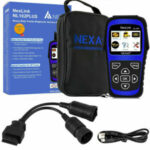
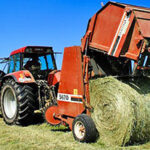
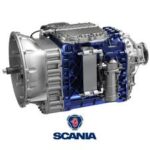
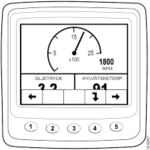
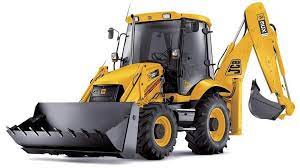 JCB Fault Codes List
JCB Fault Codes List
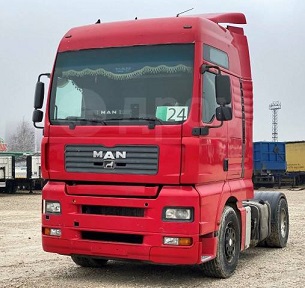 MAN TGA Fault codes list
MAN TGA Fault codes list
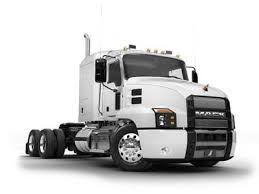 MACK Truck Fault Codes List
MACK Truck Fault Codes List